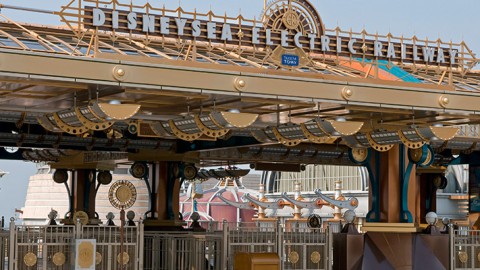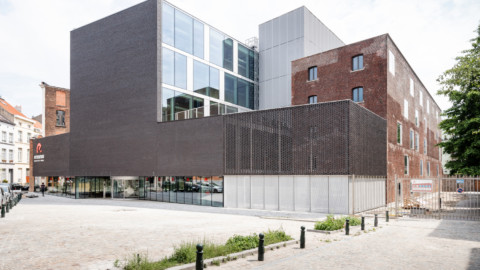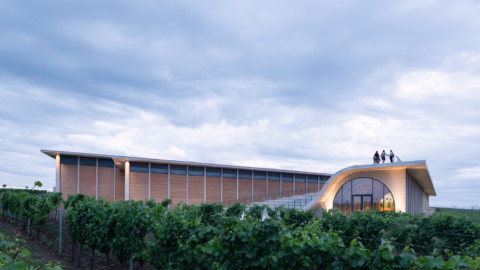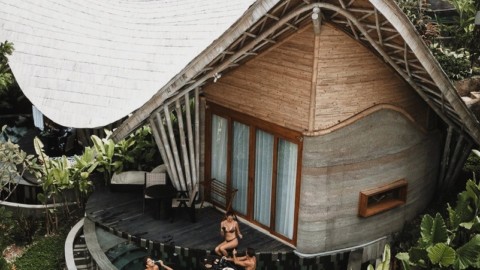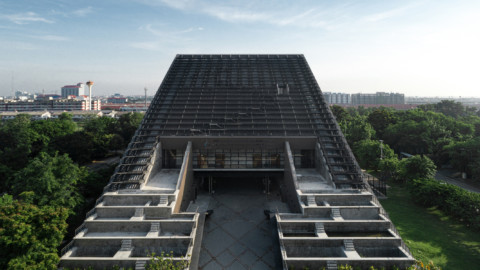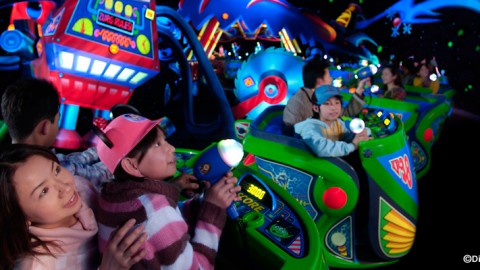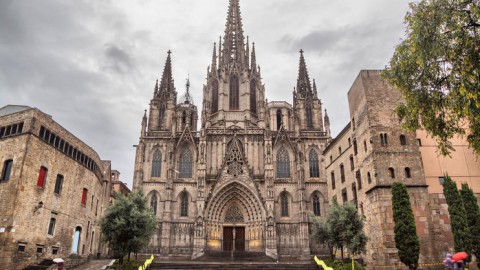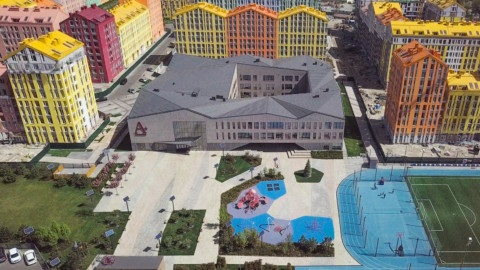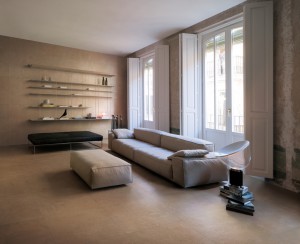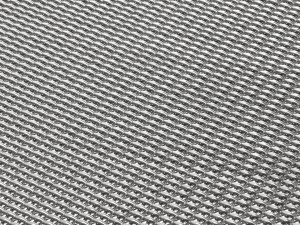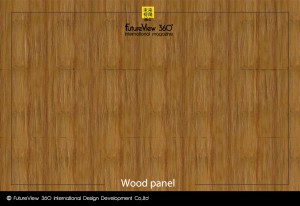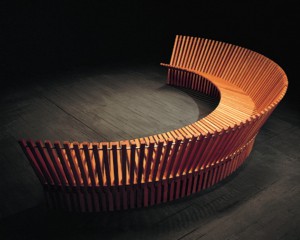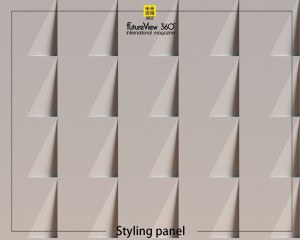Doge’s Palace 總督宮

The Doge’s Palace (Italian: Palazzo Ducale; Venetian: Pałaso Dogal) is a palace built in Venetian Gothic style, and one of the main landmarks of the city of Venice in northern Italy. The palace was the residence of the Doge of Venice, the supreme authority of the former Venetian Republic, opening as a museum in 1923. Today, it is one of the 11 museums run by the Fondazione Musei Civici di Venezia.
總督宮(意大利語:Palazzo Ducale;威尼斯人:PałasoDogal)是一座建於威尼斯哥特式風格的宮殿,也是意大利北部威尼斯市的主要地標之一。 這座宮殿是威尼斯總統的住所,是前威尼斯共和國的最高權威,於1923年作為博物館開放。如今,它是由威尼斯基文博物館(Fivazione Musei Civici di Venezia)經營的11個博物館之一。
Established:1340
Location:Piazza San Marco 1,
30124 Venice, Italy
Coordinates:45°26′02″N 12°20′24″ECoordinates: 45°26′02″N 12°20′24″E
Type:Art museum, Historic site
Visitors:1,333,000 (2016)
Director:Camillo Tonini
成立:1340
位置:聖馬可廣場1號,
30124威尼斯,意大利
坐標:45°26’02“N 12°20’24”ECoordinates:45°26’02“N 12°20’24”E
類型:藝術博物館,歷史遺址
參觀者:1,333,000(2016)
導演:Camillo Tonini
In 810, Doge Agnello Participazio moved the seat of government from the island of Malamocco to the area of the present-day Rialto, when it was decided a palatium duci (Latin for “ducal palace”) should be built. However, no trace remains of that 9th-century building as the palace was partially destroyed in the 10th century by a fire. The following reconstruction works were undertaken at the behest of Doge Sebastiano Ziani (1172–1178). A great reformer, he would drastically change the entire layout of the St. Mark’s Square. The new palace was built out of fortresses, one façade to the Piazzetta, the other overlooking the St. Mark’s Basin. Although only few traces remain of that palace, some Byzantine-Venetian architecture characteristics can still be seen at the ground floor, with the wall base in Istrian stone and some herring-bone pattern brick paving.
Political changes in the mid-13th century led to the need to re-think the palace’s structure due to the considerable increase in the number of the Great Council’s members. The new Gothic palace’s constructions started around 1340, focusing mostly on the side of the building facing the lagoon. Only in 1424 did Doge Francesco Foscari decide to extend the rebuilding works to the wing overlooking the Piazzetta, serving as law-courts, and with a ground floor arcade on the outside, open first floor loggias running along the façade, and the internal courtyard side of the wing, completed with the construction of the Porta della Carta (1442).
In 1483, a violent fire broke out in the side of the palace overlooking the canal, where the Doge’s Apartments were. Once again, an important reconstruction became necessary and was commissioned from Antonio Rizzo, who would introduce the new Renaissance language to the building’s architecture. An entire new structure was raised alongside the canal, stretching from the ponte della Canonica to the Ponte della Paglia, with the official rooms of the government decorated with works commissioned from Vittore Carpaccio, Giorgione, Alvise Vivarini and Giovanni Bellini.
Another huge fire in 1547 destroyed some of the rooms on the second floor, but fortunately without undermining the structure as a whole. Refurbishment works were being held at the palace when on 1577 a third fire destroyed the Scrutinio Room and the Great Council Chamber, together with works by Gentile da Fabriano, Pisanello, Alvise Vivarini, Vittore Carpaccio, Giovanni Bellini, Pordenone, and Titian. In the subsequent rebuilding work it was decided to respect the original Gothic style, despite the submission of a neo-classical alternative designs by the influential Renaissance architect Andrea Palladio. However, there are some classical features — for example, since the 16th century, the palace has been linked to the prison by the Bridge of Sighs.
As well as being the ducal residence, the palace housed political institutions of the Republic of Venice until the Napoleonic occupation of the city in 1797, when its role inevitably changed. Venice was subjected first to French rule, then to Austrian, and finally in 1866 it became part of Italy. Over this period, the palace was occupied by various administrative offices as well as housing the Biblioteca Marciana and other important cultural institutions within the city.
By the end of the 19th century, the structure was showing clear signs of decay, and the Italian government set aside significant funds for its restoration and all public offices were moved elsewhere, with the exception of the State Office for the protection of historical Monuments, which is still housed at the palace’s loggia floor. In 1923, the Italian State, owner of the building, entrusted the management to the Venetian municipality to be run as a museum. Since 1996, the Doge’s Palace has been part of the Venetian museums network, which has been under the management of the Fondazione Musei Civici di Venezia since 2008.
在810年,Doge Agnello Participazio將政府所在地從Malamocco島搬到了現今的里亞托地區,當時決定建造一座宮殿(拉丁語為“公爵宮殿”)。然而,由於這座宮殿在10世紀因火災而被部分摧毀,因此沒有留下那座9世紀建築的痕跡。以下重建工作是在Doge Sebastiano Ziani(1172-1178)的要求下進行的。作為一名偉大的改革家,他將徹底改變聖馬克廣場的整個佈局。新宮殿由堡壘建造,一個立面通往Piazzetta,另一個俯瞰聖馬克盆地。儘管宮殿中只剩下很少的痕跡,但仍然可以在底層看到一些拜占庭式的威尼斯建築特色,伊斯特拉石牆的牆基和一些鯡魚骨紋磚鋪砌。
由於大議會議員數量的大幅增加,13世紀中期的政治變化導致需要重新考慮宮殿的結構。新哥特式宮殿的建築始於1340年左右,主要集中在建築物面向潟湖的一側。僅在1424年,Doge Francesco Foscari決定將重建工程擴展到俯瞰Piazzetta的翼樓,作為法院,在外面有一個底層拱廊,沿著立面開放的一樓涼廊和內部庭院一側機翼的建造,完成了Porta della Carta(1442年)的建造。
1483年,宮殿一側發生猛烈的火災,俯瞰運河,那裡是總督公寓。再次,重要的重建變得必要,並由Antonio Rizzo委託,他將把新的文藝復興語言引入建築的建築。整個新結構沿著運河而建,從ponte della Canonica延伸到Ponte della Paglia,政府的官方房間裝飾著Vittore Carpaccio,Giorgione,Alvise Vivarini和Giovanni Bellini委託的作品。
1547年的另一場大火摧毀了二樓的一些房間,但幸運的是沒有破壞整個建築。 1577年第三次大火摧毀了Scrutinio室和大議會大廳,以及Gentile da Fabriano,Pisanello,Alvise Vivarini,Vittore Carpaccio,Giovanni Bellini,Pordenone和Titian的作品,宮殿正在進行翻新工程。在隨後的重建工作中,儘管有影響力的文藝復興時期建築師安德烈亞·帕拉迪奧(Andrea Palladio)提交了新古典主義的替代設計,但仍決定尊重原始的哥特式風格。然而,有一些經典的特徵 – 例如,自16世紀以來,宮殿已經被嘆息橋連接到監獄。
除了作為公爵住所外,這座宮殿還是威尼斯共和國的政治機構,直到1797年拿破崙佔領這座城市,當時它的角色不可避免地發生變化。威尼斯首先受到法國統治,然後是奧地利,最後在1866年成為意大利的一部分。在此期間,宮殿被各種行政辦公室佔據,並在城市內建立了Biblioteca Marciana和其他重要的文化機構。
到19世紀末,該結構顯示出明顯的腐爛跡象,意大利政府撥出大量資金用於修復,所有公共辦公室都搬到了其他地方,但國家保護歷史古蹟辦事處除外,它仍然位於宮殿的涼廊樓層。 1923年,意大利國家,該建築物的所有者,委託管理層到威尼斯市政府作為博物館。自1996年以來,總督宮一直是威尼斯博物館網絡的一部分,該網絡自2008年以來一直由威尼斯基金會博物館管理。

Exterior
The oldest part of the palace is the wing overlooking the lagoon, the corners of which are decorated with 14th-century sculptures, thought to be by Filippo Calendario and various Lombard artists such as Matteo Raverti and Antonio Bregno. The ground floor arcade and the loggia above are decorated with 14th- and 15th-century capitals, some of which were replaced with copies during the 19th century.
In 1438–1442, Giovanni Bon and Bartolomeo Bon built and adorned the Porta della Carta, which served as the ceremonial entrance to the building. The name of the gateway probably derives either from the fact that this was the area where public scribes set up their desks, or from the nearby location of the cartabum, the archives of state documents. Flanked by Gothic pinnacles, with two figures of the Cardinal Virtues per side, the gateway is crowned by a bust of Mark the Evangelist over which rises a statue of Justice with her traditional symbols of sword and scales. In the space above the cornice, there is a sculptural portrait of the Doge Francesco Foscari kneeling before the Lion of Saint Mark. This is, however, a 19th-century work by Luigi Ferrari, created to replace the original destroyed in 1797.
Nowadays, the public entrance to the Doge’s Palace is via the Porta del Frumento, on the waterfront side of the building.
宮殿最古老的部分是俯瞰潟湖的翼樓,其角落裝飾有14世紀的雕塑,被Filippo Calendario和各種倫巴第藝術家如Matteo Raverti和Antonio Bregno所設想。底層拱廊和上面的涼廊裝飾著14世紀和15世紀的首都,其中一些在19世紀被替換為副本。
在1438年至1442年,Giovanni Bon和Bartolomeo Bon建造並裝飾了Porta della Carta,這是該建築的儀式入口。網關的名稱可能源於這樣一個事實,即這是公共抄寫員設置辦公桌的區域,或者來自附近的卡塔布爾位置,即國家文件的檔案。兩側是哥特式的尖峰,每側有兩個紅衣主教的人物,網關上有一個馬克福音傳教士的半身像,上面擺著一把正義的雕像,上面印著她的劍和鱗片的傳統象徵。在簷口上方的空間中,有一尊雕刻的法蘭西斯科斯卡里的雕像畫像跪在聖馬可獅子麵前。然而,這是Luigi Ferrari的一部19世紀的作品,旨在取代1797年被毀的原版。
如今,總督宮的公共入口位於建築物海濱一側的Porta del Frumento。

Museo dell’Opera
Over the centuries, the Doge’s Palace has been restructured and restored countless times. Due to fires, structural failures, and infiltrations, and new organizational requirements and modifications or complete overhaulings of the ornamental trappings there was hardly a moment in which some kind of works have not been under way at the building. From the Middle Ages, the activities of maintenance and conservation were in the hands of a “technical office”, which was in charge of all such operations and oversaw the workers and their sites: the Opera, or fabbriceria or procuratoria. After the mid-19th century, the Palace seemed to be in such a state of decay that its very survival was in question; thus from 1876 a major restoration plan was launched. The work involved the two facades and the capitals belonging to the ground-floor arcade and the upper loggia: 42 of these, which appeared to be in a specially dilapidated state, were removed and replaced by copies. The originals, some of which were masterpieces of Venetian sculpture of the 14th and 15th centuries, were placed, together with other sculptures from the facades, in an area specifically set aside for this purpose: the Museo dell’Opera. After undergoing thorough and careful restoration works, they are now exhibited, on their original columns, in these 6 rooms of the museum, which are traversed by an ancient wall in great blocks of stone, a remnant of an earlier version of the Palace. The rooms also contain fragments of statues and important architectural and decorative works in stone from the facades of the Palace.
Museo dell’Opera
幾個世紀以來,總督宮經過無數次重組和修復。由於火災,結構故障和滲透,以及新的組織要求和修改或對裝飾物的徹底改造,幾乎沒有一個時刻在建築物上沒有進行某種工作。從中世紀開始,維護和保護活動掌握在“技術辦公室”手中,該辦公室負責所有此類操作並監督工人及其所在地:歌劇院或法院或檢察院。在19世紀中期之後,宮殿似乎處於腐朽狀態,以至於它的生存受到質疑;因此從1876年開始實施一項重大恢復計劃。這項工作涉及兩個立面和屬於底層拱廊和上部涼廊的首都:其中42個似乎處於一個特別破舊的狀態,被拆除並由副本取代。原作,其中一些是14世紀和15世紀威尼斯雕塑的傑作,與外牆的其他雕塑一起放置在專門為此目的預留的區域:Museo dell’Opera。經過徹底和細緻的修復工作後,他們現在在原始的柱子上展示了博物館的這6個房間,這些房間被一塊巨大的石塊穿過古老的牆壁,是宮殿早期版本的遺跡。客房還包括雕像碎片以及宮殿外牆的重要建築和裝飾作品。

Doge’s apartments
The rooms in which the Doge lived were always located in this area of the palace, between the Rio della Canonica – the water entrance to the building – the present-day Golden Staircase and the apse of St. Mark’s Basilica. The disastrous fire in this part of the building in 1483 made important reconstruction work necessary, with the Doge’s apartments being completed by 1510. The core of these apartments forms a prestigious, though not particularly large, residence, given that the rooms nearest the Golden Staircase had a mixed private and public function. In the private apartments, the Doge could set aside the trappings of office to retire at the end of the day and dine with members of his family amidst furnishings that he had brought from his own house (and which, at his death, would be promptly removed to make way for the property of the new elected Doge).
The Scarlet Chamber possibly takes its name from the color of the robes worn by the Ducal advisors and counsellors for whom it was the antechamber. The carved ceiling, adorned with the armorial bearings of Doge Andrea Gritti, is part of the original décor, probably designed by Biagio and Pietro da Faenza. Amongst the wall decoration, two frescoed lunettes are particular worthy of attention: one by Giuseppe Salviati, the other by Titian.
The “Scudo” Room has this name from the coat-of-arms of the reigning Doge which was exhibited here while he granted audiences and received guests. The coat-of-arms currently on display is that of Ludovico Manin, the Doge reigning when the Republic of St. Mark came to an end in 1797. This is the largest room in the Doge’s apartments, and runs the entire width of this wing of the palace. The hall was used as a reception chamber and its decoration with large geographical maps was designed to underline the glorious tradition that was at the very basis of Venetian power. The two globes in the center of the hall date from the same period: one shows the sphere of heavens, the other the surface of Earth.
The Erizzo Room owes its name to Doge Francesco Erizzo (1631–1646) and is decorated in the same way as the preceding ones: a carved wood ceiling, with gilding against a light-blue background, and a Lombardy-school fireplace. From here, a small staircase leads up to a window that gave access to a roof garden.
The Stucchi or Priùli Room has a double name due to both the stucco works that adorn the vault and lunettes, dating from the period of Doge Marino Grimani (1595–1605), and the presence of the armorial bearings of Doge Antonio Priùli (1618–1623), which are to be seen on the fireplace, surmounted by allegorical figures. The stucco-works on the walls and ceiling were later commissioned by another Doge Pietro Grimani (1741–1752). Various paintings representing the life of Jesus Christ are present in this room, as well as a portrait of the French King Henry III (perhaps by Tintoretto) due to his visit to the city in 1574 on his way from Poland to take up the French throne left vacant with the death of his brother Charles IX.
Directly linked to the Shield Hall, the Philosophers’ Room takes its name from the twelve pictures of ancient philosophers which were set up here in the 18th century, to be later replaced with allegorical works and portraits of Doges. To the left, a small doorway leads to a narrow staircase, which enabled the Doge to pass rapidly from his own apartments to the halls on the upper floors, where the meetings of the Senate and the Great Council were held. Above the other side of this doorway there is an important fresco of St. Christopher by Titian.
The Corner Room’s name comes from the presence of various paintings depicting Doge Giovanni Corner (1625–1629). The fireplace, made out of Carrara marble, is decorated with a frieze of winged angels on dolphins around a central figure of St. Mark’s Lion. Like the following room, this served no specific function; set aside for the private use of the Doge.
The Equerries Room was the main access to the Doge’s private apartments. The palace equerries were appointed for life by the Doge himself and had to be at his disposal at any time.
總督的公寓
總督居住的房間總是位於宮殿的這個區域,位於Rio della Canonica之間 – 建築的水入口 – 現今的Golden Staircase和聖馬克大教堂的後殿。 1483年這座建築的這一部分的災難性火災使重要的重建工作成為必要,Doge的公寓將於1510年完工。這些公寓的核心形成了一個著名但不是特別大的住宅,因為最靠近Golden Staircase的房間有一個混合的私人和公共功能。在私人公寓裡,總督可以將辦公室的服務放在一邊,在一天結束時退休,並與他的家人一起在他自己的家裡帶來的家具中用餐(在他去世的時候,他會及時刪除為新當選的總督的財產讓路)。
血色室可能的名字來自公爵顧問和輔導員所穿的長袍的顏色,前者是前廳。雕刻的天花板裝飾著Doge Andrea Gritti的裝飾軸承,是原始裝飾的一部分,可能由Biagio和Pietro da Faenza設計。在牆面裝飾中,兩個壁畫的lunettes特別值得關注:一個是Giuseppe Salviati,另一個是Titian。
“Scudo”房間的名字來自衛冕總督的徽章,在這裡展出,同時授予觀眾和接待客人。目前展出的徽章是Ludovico Manin,當聖馬克共和國在1797年結束時,總督統治。這是總督公寓中最大的房間,並且在這個翼的整個寬度上運行這座宮殿。大廳被用作接待室,其大型地理地圖的裝飾旨在強調威尼斯力量的基礎上的光榮傳統。大廳中央的兩個地球儀可以追溯到同一時期:一個顯示天空的球體,另一個顯示地球的表面。
Erizzo Room的名字來自Doge Francesco Erizzo(1631-1646),裝飾方式與前面的相同:木雕天花板,淺藍色背景鍍金,倫巴第學校壁爐。從這裡,一個小樓梯通向窗戶,可通往屋頂花園。
Stucchi或PriùliRoom有兩個名字,因為裝飾了拱頂和lunettes的灰泥作品,可以追溯到Doge Marino Grimani(1595-1605)時期,以及DogeAntonioPriùli(1618-)的裝飾軸承的存在1623),在壁爐上可見,由寓言形象所覆蓋。牆壁和天花板上的灰泥牆後來由另一個Doge Pietro Grimani(1741-1752)委託製作。代表耶穌基督生平的各種畫作都出現在這個房間裡,以及法國國王亨利三世(也許是丁托列托)的肖像,因為他在1574年從波蘭前往該市參觀法國王位隨著他的兄弟查理九世去世而空缺。
哲學家的房間與盾大廳直接相連,其名稱取自18世紀在這裡建立的十二位古代哲學家的照片,後來被寓意作品和總督的肖像所取代。在左邊,一個小門通向一個狹窄的樓梯,這使得總督能夠迅速從他自己的公寓通往上層的大廳,在那裡舉行參議院和大議會的會議。在這個門口的另一邊,有一個重要的壁畫聖克里斯托弗由提香。
角落間的名字來自描繪Doge Giovanni Corner(1625-1629)的各種畫作。壁爐由卡拉拉大理石製成,裝飾著圍繞著聖馬可獅子中心人物的海豚翅膀的天使。像下面的房間一樣,這沒有特定的功能;留出供私人使用的總督。
Equreries Room是Doge私人公寓的主要通道。宮殿的葬禮由總督本人任命,並且隨時都可以隨時使用。

FROM:https://en.wikipedia.org/wiki/Doge%27s_Palace
FROM:Venice, Italy: The Doge’s Palace
FROM:VENICE: Doge’s Palace & Bridge of Sighs
Don’t you think it’s addictive?
Want to know more about the beauty of architecture?
Come and join our members to explore the beauty of architectural design.
覺得看得不過癮嗎?
想要知道更多建築之美嗎?
快來加入我們的會員,一同探索建築設計之美。
The above article is purely for appreciation and sharing purposes, as well as the construction of new technology and the public can be in-depth understanding of the information at the same time there are sources, will be able to query, no use of the document as a commercial transaction, if illegal, please inform the We will immediately remove the site, thank you for cooperation.
以上文章純粹作為欣賞及分享用途,以及將建築新型技術傳遞給與大眾能夠深入了解,同時資料還有來源,將可查詢,絕無使用該文件資料作為商業交易行為,如有違法請務必告知該網站我們將立即處理撤除,謝謝合作。


